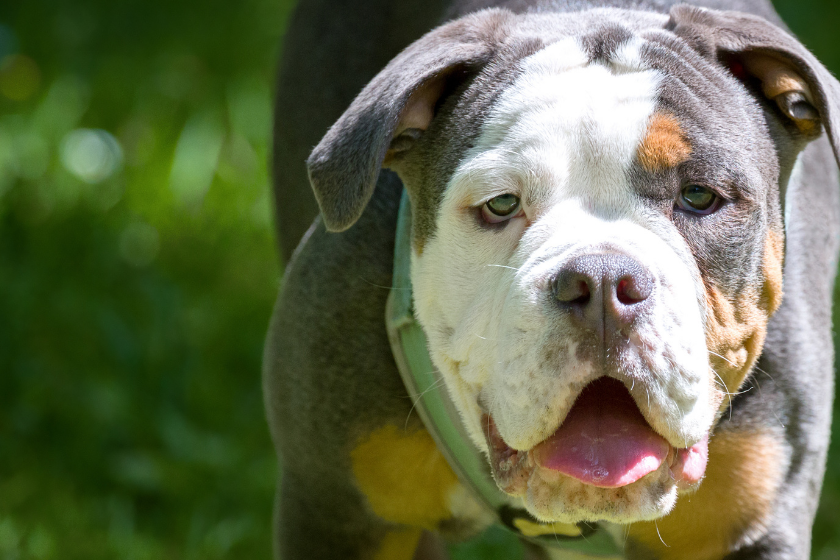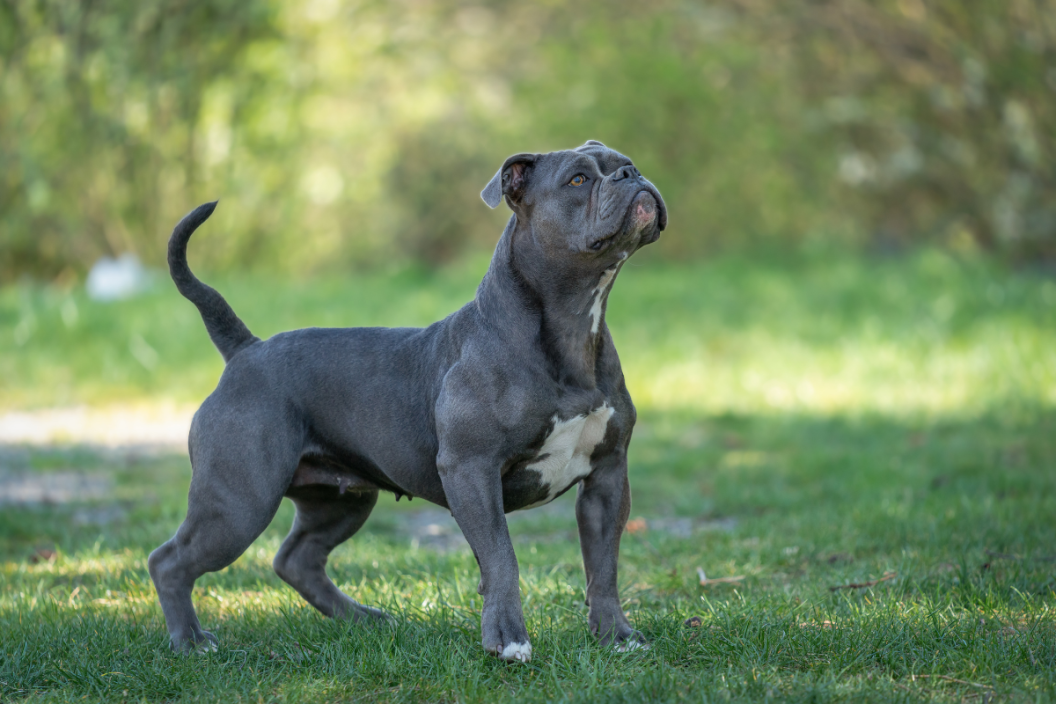Now extinct, the Regency Period Bull Baiter was a strong and agile dog breed that was created for bull-baiting and English blood sports in London — until the decline of these events.
Developed in America in the 1970s, the Old English Bulldog is a recreation of the Regency Period Bull Baiter— the earliest ancestor of many modern-day bulldog breeds, like the American Bulldog and the English Bulldog. This old bully breed was compact, muscular, and was most known for their large lower jaw that was strong enough to grip just about anything.
The ancient version of the Old English Bulldog was bred out of a need to create an athletic and agile dog to use in bull-baiting and other common English blood sports (like dog fighting). After animal cruelty laws were passed and this breed died out, Mastiffs and Old English Terriers were crossbred to resurrect this popular breed, resulting in the modern bulldog hybrid known as the Old English Bulldog. The extinct breed was also said to be an early attempt of the Bull Terrier and the American Pit Bull Terrier.
About the Old English Bulldog

Old English Bulldogs make great pets. They are very loyal to their families, courageous, trustworthy, and protective, making them excellent watchdogs. Even though they are brachycephalic dogs, unlike French Bulldogs and other breeds of Bulldogs, they don't seem to have many breathing problems.
These good-looking dogs are medium-sized, well-balanced, and proportionate. While they are powerful, active, and muscular dogs, they have a great temperament and are docile enough to be good with small kids (with early socialization of course!), as OEBs are also very loving and easy to train.
The Old English Bulldog is recognized by the United Kennel Club (UKC) and has a lifespan of 9 to 14 years.
The Decline of Ancient Old English Bulldogs

The decline of the ancient version of this breed came when the Cruelty to Animals Act was passed in the 18th century, causing a decline in bull-baiting and dog fighting, ultimately leading to a lack of interest in the Regency Period Bull Baiter. Initially bred for their extra agility and toughness in the ring, this breed no longer had a place when dog fighting was made illegal.
The Bull Baiter might be considered extinct, but was resurrected in the form of the modern Old English Bulldog.
The Old English Bulldog as we know it today was developed in 1971 by Pennsylvania native, David Leavitt, when he wanted to create a dog that was less aggressive but still had the same physical traits of the ancient Bull Baiter. He got exactly that— today's OEB is active, happy, and has fewer health problems than the extinct Regency Period Bull Baiter it was modeled from.
Leavitt created today's OEB (a.k.a. Leavitt Bulldogs) by crossbreeding the two Bulldog breeds (American and English), American Pit Bull Terrier, and the Bullmastiff; the result is an athletic, eager to please, and protective dog breed.
While both breeds sometimes go by the same name, and are commonly confused with each other, the Old English Bulldog isn't old at all, but a modern breed bred to capture the traits of a now extinct breed from the 1700s.
Old English Bulldogs Are the Future

English Bulldogs suffer from a host of genetic issues from years of inbreeding, and scientists say that the breed cannot be returned to full health without a new bloodline. Though there are many bulldogs to breed, none contains the desired traits without additional drawbacks. Some dogs don't suffer from breathing problems but have chronic arthritis. Other dogs may be able to give birth normally, but have major breathing problems. Scientists have struggled to find enough genetic diversity in the bulldog line to rebuild the breed. Fortunately, they may have found a solution with the Old English Bulldog.
While genetically similar to the English Bulldog, this breed has enough genetic diversity and fewer health problems, making it an ideal candidate to rebuild the English Bulldog breed. In a form of poetic justice, the bulldog bred to replace an extinct ancient bulldog may prevent modern English Bulldogs from becoming extinct as well.
Do you live with an OEB? Share your pooch on our Wide Open Pets Facebook page!
This article was originally published December 23, 2020.




